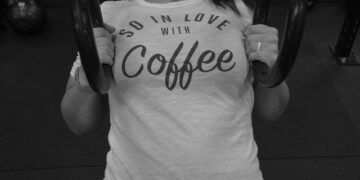In Too Afraid to Ask, we’re answering food-related questions that may or may not give you goosebumps. Today: My garlic turned blue—is it still safe to eat?
Our kitchens are full of mysteries: Is burnt food actually bad for us? How gross would it be to eat one of my sprouted potatoes? What exactly do those crisper drawers in your refrigerator do? But there’s one kitchen question that ties some home cooks’ brains into knots: Why did my garlic become blue in the middle of cooking?
If you’ve found that your garlic has changed color mid-recipe, the good news is that it won’t make your meal any less delicious. As it turns out, it’s a somewhat common occurrence—just check out the endless, shocked-sounding Reddit posts on the subject. Like many kitchen mysteries, the answer lies in science.
Why does garlic turn blue?
When garlic takes on a blue hue, it’s the result of a chemical reaction. As flavor scientist and author of Flavorama Arielle Johnson explains, it all starts with an enzyme in garlic called alliinase—the same enzyme that’s responsible for the ingredient’s spicy flavor. “Alliinase can react with sulfur-containing molecules,” she says, such as “free amino acids, which create vivid blue and green pigments.” According to Johnson, garlic is more likely to turn blue when it’s been stored at cold temperatures.
Garlic can turn blue in essentially any recipe where it comes into contact with an acidic ingredient (e.g., in a vinegary ferment or a lemony roast chicken). But not to worry, says Johnson—blue garlic is still safe to eat. In Chinese laba, which is a pickled garlic, that vibrant hue is prized.
Just make sure that the bluish green you’re seeing is indeed the result of the garlic’s contact with acid, and not something like mold, which can have a somewhat similar color. The way to tell the difference? Mold will often appear on only a small part of the clove, and it will create a rough texture. If whole garlic cloves sitting unused on your counter are blue or green, that’s likely mold, while garlic that turns blue in the midst of a recipe is a different story.
Flavorama: A Guide to Unlocking the Art and Science of Flavor
What can I do to avoid blue garlic?
Garlic that’s blue due to cooking is perfectly safe to eat, but if it’s simply not your jam, there are a few ways to reduce your odds of encountering it. The first is obvious: Don’t combine garlic with any type of acid (duh), though, we’re obligated to say that’s a sad life to live. Older garlic is more likely to turn blue—garlic for laba, for instance, is often aged for months before pickling to increase color. So cooking with younger garlic can lower your chances of the hue changing. Garlic can last up to six months on your counter, but using garlic toward the end of that period means it’s more likely to turn blue.
Do other foods turn blue like garlic?
On the other hand, if you’re hoping for more blue foods in your diet, garlic isn’t your only option. Ingredients like blue corn, blueberries, and butterfly pea powder have a natural blue color. Sunflower seeds or sunflower butter turn blue when combined with baking soda or powder (which changes its acidity), and red cabbage is known to go blue when it’s introduced into a slightly alkaline environment (like when it’s stewed on its own with other vegetables). In these instances, just like garlic, a blue hue doesn’t mean these foods are inedible—just that you’ll have a bit more color added to your plate.
Go garlic go

Only 6 ingredients, and you’ll always know when it’s done.
View Recipe
>>> Read full article>>>
Copyright for syndicated content belongs to the linked Source : BonAppetit – https://www.bonappetit.com/story/garlic-turned-blue































